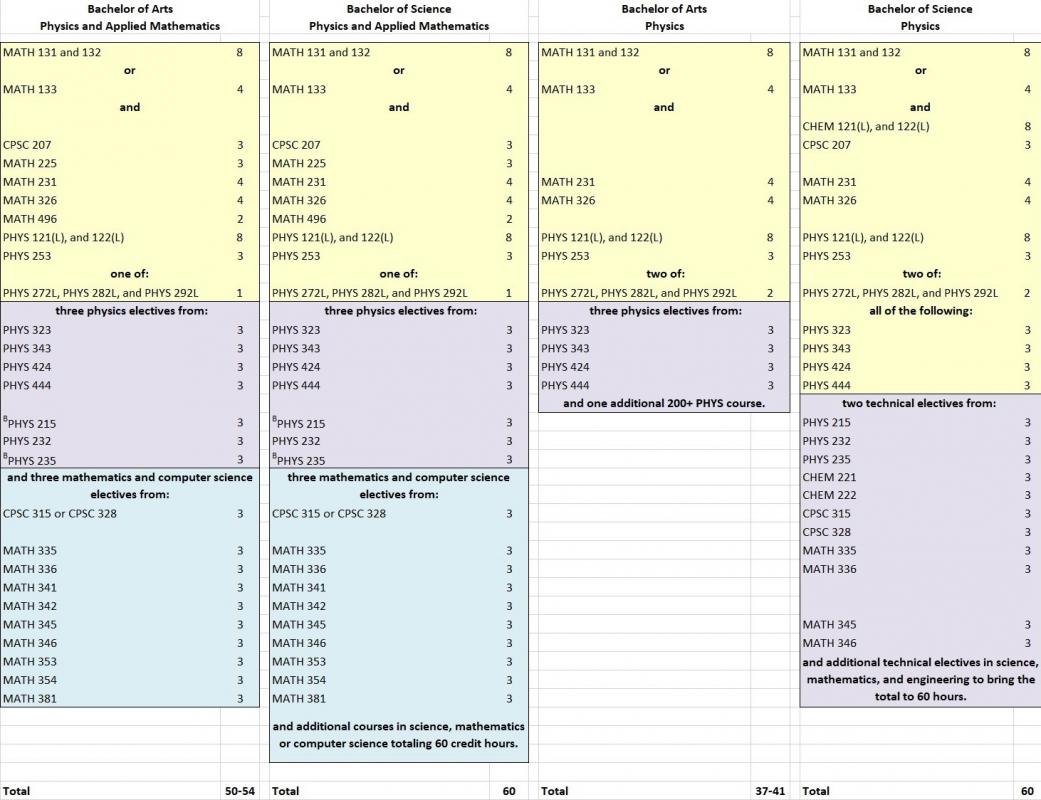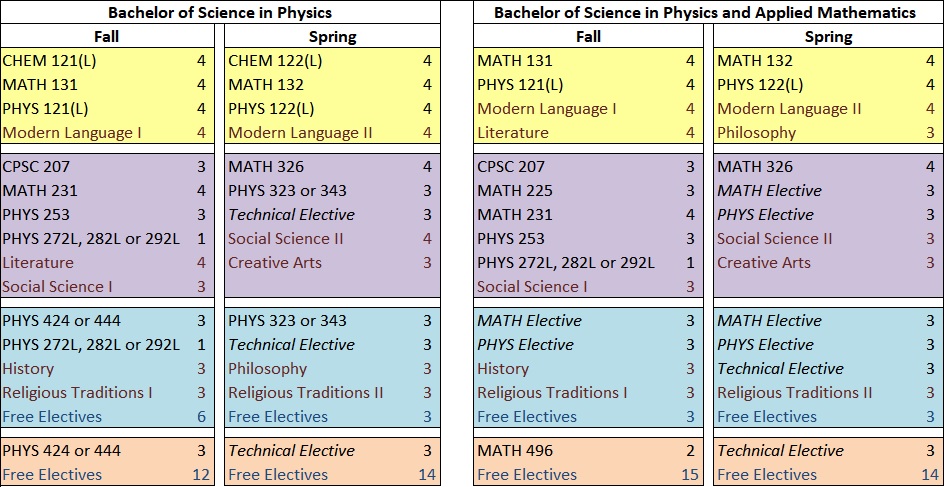Why should I study physics?
Studying physics allows us to learn more about our world as all scientific principles are built on fundamental concepts from physics. Physics requires logic, reasoning, and a bit of imagination. For that reason, physics courses teach critical skills needed in other scientific disciplines including chemistry, geology, astronomy, and medicine. Earning a degree in physics is challenging, but well worth the effort. Studying physics prepares you for a scientific career and, among all of the sciences, physics has one of the highest starting salaries.
What is special about physics at Saint Mary's College?
Our physics program is designed to cultivate knowledge in the laws that govern nature. Our program is also flexible and can support a wide variety of student interests. We offer courses in physics that range from astronomy to quantum mechanics. Our physics courses prepare students to succeed in graduate school and medical school, and professions in education, government, and industry. At Saint Mary’s, we offer smaller classes with plenty of opportunities for each student to be a leader and to work with our faculty.
Another great facet of studying physics at Saint Mary's is the dual-degree engineering program we have with the University of Notre Dame. The physics major we offer pairs remarkably well with mechanical engineering, electrical engineering, and civil engineering. Our students get to experience the best of being at a small college and research university through this program.
When do physics majors at Saint Mary’s typically start research?
Our students start doing research or look for internships surprisingly early in their time at Saint Mary’s. In the past, some of our students have been able to begin research as quickly as the first semester of their first year. All that a student must do to get started is to find someone who is working on an exciting project and then ask to join. Being able to work on research so early enables our students the opportunity to work on variety of projects over there four years at Saint Mary's. This allows them to better understand what they want to do in the future and ultimately find their path.
What physics courses are offered as part of the major?
What are the degree options for someone interested in physics?
Our students have five options to choose from: the Physics minor, the two Physics and Applied Mathematics (PAM) degrees (B.A. or B.S.) and the two Physics degrees (B.A and B.S). The PAM degrees are at their core mathematics degrees and they are offered through the Department of Mathematics and Computer Science though they do require a good number of physics courses. The physics minor can be completed with any other major at Saint Mary’s. It pairs particularly well for students majoring in Chemistry, Mathematics, and all of the engineering disciplines. The B.A. and B.S. in Physics are our more traditional physics degrees which prepare our students for graduate school or industrial work, often as engineers.
A side-by-side comparison of the four majors related to the physics program is shown below.

What is the difference between the Physics and PAM degrees?
A graduate with a B.A. or B.S. in Physics is professionally a physicist, while a graduate with a degree in Physics and Applied Mathematics is technically a mathematician. The required coursework is similar for these degrees, but there are a few important differences. Below is a side-by-side comparison of the requirements for our majors.
Students are often undecided about which of these paths is right for them, but there are two courses, MATH 225: Foundations of Higher Mathematics and PHYS 253: Modern Physics, that often help. These classes are often taken in a student's second year and they are indicative of the course work and professional work expected of mathematicians and physicists.
A sample student schedule for the B.S. in Physics and the B.S. in Physics and Applied Mathematics is shown below.

What kind of career can I have with a bachelor’s degree in physics?
The broad perspective that comes from earning a bachelor’s degree in physics can be applied in a variety of disciplines. A physicist’s creative problem-solving approach is desirable in many fields in the private sector. Most physicists who don’t go on to graduate school typically work in either engineering or computer science. In general, physics provides a great foundation for careers in: astronomy, biology, computer science, education, engineering, finance, journalism, law and medicine. Physics majors from Saint Mary’s also benefit from a well-rounded liberal arts education that emphasizes writing and presenting. For more information on careers see the Careers and Advanced Degrees section.
Will a physics degree be benefitial for Engineering?
Physicists often work as Engineers (Aerospace, Civil, Electrical, Field, Manufacturing, Mechanical, or Technical Service) or as Product Managers in industry. At Saint Mary’s, many of our physics majors take part in the highly successful dual-degree engineering program with the University of Notre Dame. It should also be noted that this isn’t the only path to becoming an engineer. A bachelor’s degree in physics alone is often sufficient for beginning a career in engineering.
Pairing physics with electrical, mechanical, aerospace, or civil engineering is common at Saint Mary’s College. Each of these engineering disciplines have many of the same course requirements as physics. Further, both physics and these engineering fields often share a similar philosophical approach to addressing a problem.
To make our program more flexible, we have created two one-credit physics courses, PHYS 321: Lagrangian Mechanics and PHYS 341: Statistical Mechanics. These can be combined with related engineering courses to substitute the core physics requirements in Classical Mechanics and Thermodynamics. The idea here is to take advantage of the overlap in course work, while still providing all of the information critical for both physics and engineering. Many other courses (for example Calculus I, II and III) are taken at either Saint Mary’s College or the University of Notre Dame and they satisfy the requirements at the other institution automatically.
As a physics major, students can use the technical electives to prepare themselves to become a Software Engineer, IT Consultant, Data Analyst, or just about any other technical career. This is possible thanks to a well-rounded education in physics, and a supplemental background in mathematics and computer science.
What other jobs do physicists go into?
Physicists often have careers in fields that one might not expect such as medicine and finance. We have designed our physics degrees to be flexible with that in mind. This allows for our students to more easily minor in other subjects. The core requirements of B.S. in Physics can prepare students to study physics in graduate school. These required courses is where our program’s rigor lies. The flexibility comes in technical electives section. Here students can choose additional courses in science, mathematics, and engineering. Courses offered in economics, education, and other fields can also count toward this elective total as long as the course has a scientific or mathematical basis.
For a student intending to go to physics graduate school, taking electives in physics courses will be ideal as will taking mathematics courses in differential equations, probability and statistics. Those who earn a Ph. D. in Physics typically become Research Scientists in industry and a smaller percentage become University Professors.
Though it may seem like an odd pair, for many years, physics majors have scored the highest of all majors on the MCAT. So if you are considering a pre-health major, it might make sense to include physics as a potential major as the MCAT is often a barrier to admission for medical school. The pre-health physics students should take electives in nuclear physics, organic chemistry and biochemistry. When physicists work in medical fields it is typically as Medical Doctors or as Accelerator Operators producing medical isotopes.
Another wonderful career option for physicists is to become a High School Teacher. It is worth noting that there is a vast shortage of physics teachers in the US. Less than one third of all physics high school physic teachers have a degree in physics. This track consists of taking physics electives, as well as, additional education courses on teaching mathematics or science. Saint Mary’s College offers a degree in Secondary Education which is incredibly helpful for those who intend to teach.
Yet another great option is to take part in Saint Mary’s 4-1 Data Science Master’s Program and thereby becoming a Data Scientist. In this option, students should take undergraduate courses in probability and statistics. They should also take two graduate level courses in computer programming and applied statistics which will get them ahead in the program.
The final common option for physics majors is a preparation for a career as a Financial Analyst. Finance is a field related to physics because both require the ability to model data and identify trends. Further, both certainly necessitate a general comfort with numbers. A minor in Business Administration or Economics is very helpful with this option.
